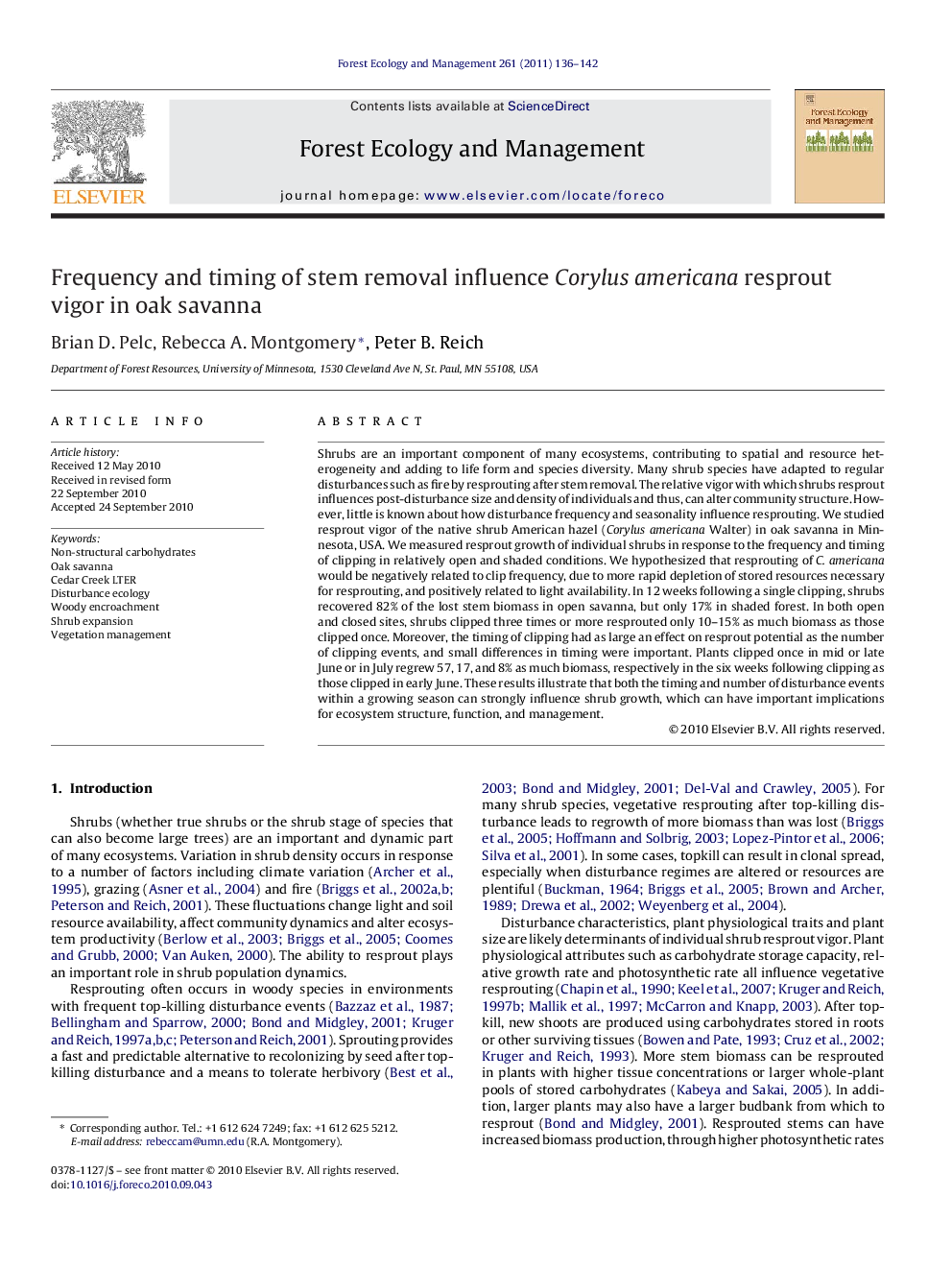| کد مقاله | کد نشریه | سال انتشار | مقاله انگلیسی | نسخه تمام متن |
|---|---|---|---|---|
| 88134 | 159285 | 2011 | 7 صفحه PDF | دانلود رایگان |

Shrubs are an important component of many ecosystems, contributing to spatial and resource heterogeneity and adding to life form and species diversity. Many shrub species have adapted to regular disturbances such as fire by resprouting after stem removal. The relative vigor with which shrubs resprout influences post-disturbance size and density of individuals and thus, can alter community structure. However, little is known about how disturbance frequency and seasonality influence resprouting. We studied resprout vigor of the native shrub American hazel (Corylus americana Walter) in oak savanna in Minnesota, USA. We measured resprout growth of individual shrubs in response to the frequency and timing of clipping in relatively open and shaded conditions. We hypothesized that resprouting of C. americana would be negatively related to clip frequency, due to more rapid depletion of stored resources necessary for resprouting, and positively related to light availability. In 12 weeks following a single clipping, shrubs recovered 82% of the lost stem biomass in open savanna, but only 17% in shaded forest. In both open and closed sites, shrubs clipped three times or more resprouted only 10–15% as much biomass as those clipped once. Moreover, the timing of clipping had as large an effect on resprout potential as the number of clipping events, and small differences in timing were important. Plants clipped once in mid or late June or in July regrew 57, 17, and 8% as much biomass, respectively in the six weeks following clipping as those clipped in early June. These results illustrate that both the timing and number of disturbance events within a growing season can strongly influence shrub growth, which can have important implications for ecosystem structure, function, and management.
Research highlights▶ More frequent top-kill within a single season results in reduced resprout biomass in current and future years. ▶ Small changes (e.g. 2 weeks) in the timing of top-kill made major differences in resprout rates and biomass. ▶ Shrubs clipped even just a few weeks later resprouted more slowly and to a lesser extent. ▶ Shrubs in open sunlit conditions had more vigorous resprouting than in shaded sites.
Journal: Forest Ecology and Management - Volume 261, Issue 1, 1 January 2011, Pages 136–142